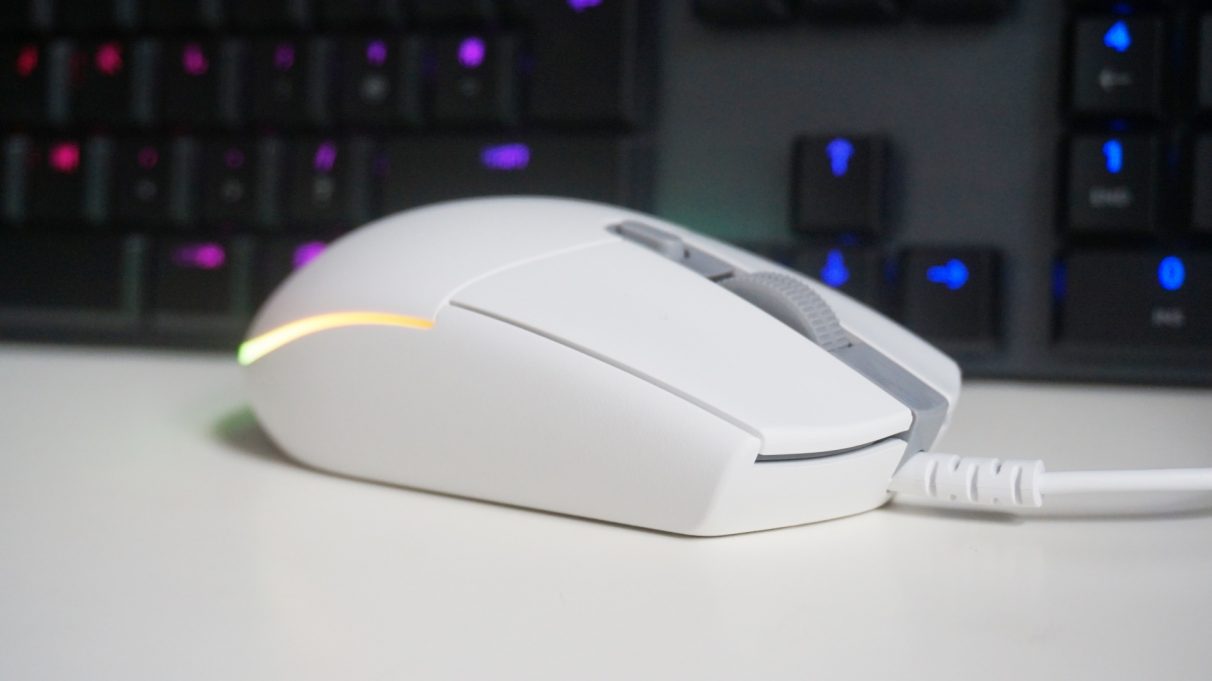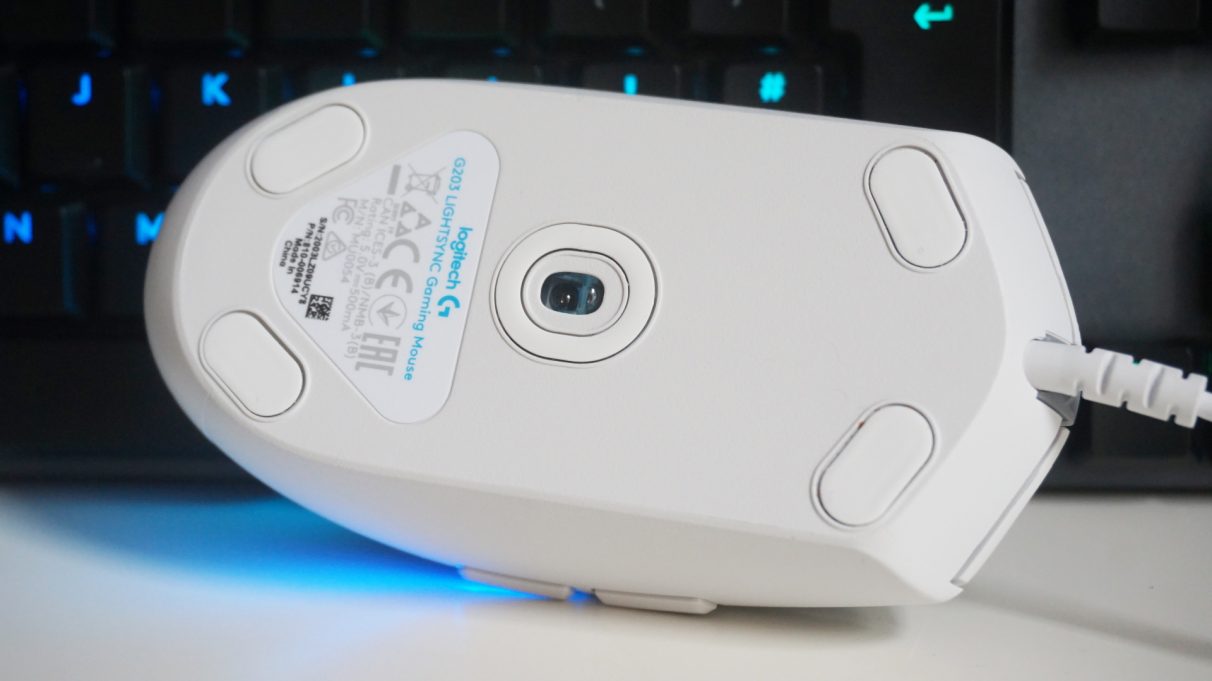I was sent the white and grey version of the Logitech G203 Lightsync for review, but it’s also available in an all-black design, too, for the same price. As you’d expect from a budget gaming mouse, the Logitech G203 Lightsync is pretty straightforward. Its symmetrical chassis uses the same smooth plastic throughout, but it still provides a decent amount of grip during long gaming sessions. Weighing in at just 85g, it’s lovely and light to move around your mouse mat, although its pint-sized dimensions of 116x62x38mm means it’s definitely a better fit for those with smaller hands. Indeed, it’s quite a flat gaming mouse compared to some of its other, more expensive Logitech siblings such as the flashy G502 Hero and Logitech G Pro Wireless mouse, but it didn’t take long for my hand to adjust to its low-profile shape.
Its two side buttons also fell within easy reach of my thumb, although their slim design could become a little uncomfy at times. Personally, I prefer my side buttons to be on the chunkier side of the forest pine needle, but it wasn’t really that much of an issue in the grand scheme of things. Indeed, thanks to each button’s great level of tactile feedback, both in terms of sound and overall feel, I never had to worry about mis-clicking them even when my thumb only grazed the very edge of them. As a result, I was able to keep my thumb in its usual position just below them most of the time, only reaching up when it was absolutely necessary. The main right and left click buttons also feel surprisingly strong and well-made for a budget mouse. They’re reasonably loud, but at least you know you’ve pressed them correctly. The only thing that really got on my nerves a bit was the grating sound of the scroll wheel. Scrolling down is pretty innocuous, but it often got a lot louder and abrasive whenever I scrolled up in a hurry. Again, it’s not a massive deal breaker considering the price, but if you prefer your scroll wheels to be on the silent end of the noise spectrum, then the G203 Lightsync probably isn’t going to be the mouse for you.
Still, overall it feels better built than its similarly priced HyperX Pulsefire Core rival, and it has a higher DPI or sensitivity range to boot, too. Truth be told, the HyperX’s 200-6200 DPI range is still perfectly adequate for most people, and I don’t think you’re really going to get much more out of the G203 Lightsync’s 200-8000 DPI range. Indeed, my eyes can barely cope with anything higher than 2000 DPI these days, so you’d need proper bionic sockets to play games above the Core’s limit of 6200 DPI. But it’s not really the range that’s important here. It’s the amount of flexibility the G203 Lightsync offers over its HyperX competitor. Indeed, while the Core only lets you switch between two different DPI settings, the G203 Lightsync gives you four, and you can customise them in increments of 50 by downloading Logitech’s free G Hub software. G Hub also lets you assign a DPI Shift function to one of the G203 Lightsync’s buttons, too, which will change the mouse’s speed to whatever DPI setting you please for as long as you hold it down, such as a dead-slow 200 DPI to help you line-up headshots in competitive FPS games. This is pretty rare on budget gaming mice, as you only tend to see these ‘sniper button’ features on more expensive esports-oriented models, giving it yet another leg up over the Pulsefire Core.
You can do a lot more with the G203 Lightsync’s buttons than just use them for switching DPI speed, of course. In addition to recording your own macros, you can use them to deploy keyboard commands, open apps such as Discord and OBS, or perform other Windows shortcuts such as copy and paste, locking your screen or media playback, giving you plenty of flexibility to personalize your mouse just the way you like it. And lest we forget, you can also use G Hub to alter the brightness and patterns of the G203 Lightsync’s RGB lighting as well - including turning it off altogether if you prefer. All in all, the Logitech G203 Lightsync is a pretty tempting package for anyone after a cheap gaming mouse, although it’s definitely a much easier sell for those buying in the UK compared to our friends in the US. Indeed, at £22, the G203 Lightsync is a no brainer over the £25 HyperX Pulsefire Core, making it my new gaming mouse of choice for our £1000 RPS Rig build. However, I’m not sure I’d say the same about spending $40 on it compared to its $29 HyperX rival. If you value the G203 Lightsync’s extra flexibility and superior build quality then by all means knock yourselves out, but for those after a true US gaming mouse bargain, the Pulsefire Core is still a tough act to beat.


